
A star cluster is a group of stars bound together by gravity, formed from the same giant molecular cloud. These celestial structures provide astronomers with natural laboratories to study the birth, evolution, and death of stars. There are two main categories: open clusters and globular clusters, each telling a different story about our galaxy.
Open clusters are young groups containing from a few dozen to a few thousand stars, scattered across the galactic disk. They form in the spiral arms of galaxies, where interstellar gas is abundant. Their ages range from a few million to a few hundred million years (e.g., the Pleiades, M45). In contrast, globular clusters are dense spheres of hundreds of thousands of ancient stars (10 to 13 billion years old), orbiting the centers of galaxies like satellites. Their low metallicity reveals their primitive origin, often linked to the formation of the Milky Way itself (e.g., Omega Centauri).
A cluster is born when gravitational forces compress a cloud of gas and dust, triggering star formation within it. In open clusters, massive stars (O and B types) initially dominate, but their short lifespans (a few million years) lead them to explode as supernovae, gradually dispersing the cluster. Less massive stars, like our Sun, survive longer but eventually escape due to galactic tidal forces. Globular clusters, being more massive, better resist these disruptions and can persist for billions of years. Their study provides clues about the age and early chemistry of the Universe.
Clusters are time capsules:
Telescopes like Gaia (ESA) or James Webb (NASA/ESA/CSA) are revolutionizing their study by precisely measuring their movements, compositions, and even atmospheres.
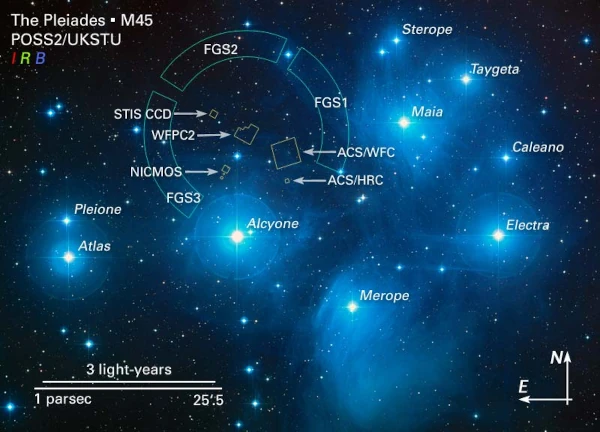
Image description: The Pleiades cluster, also known as M45, is an open cluster in the constellation Taurus, visible to the naked eye. Comprising about 3,000 stars, it is only 100 million years old and located 444 light-years from Earth. Its blue stars, enveloped in reflection nebulae (such as around Merope and Maia), make it an iconic object. The seven brightest stars bear the names of Greek mythological figures (Alcyone, Atlas, Electra, etc.). Image source: ESO.
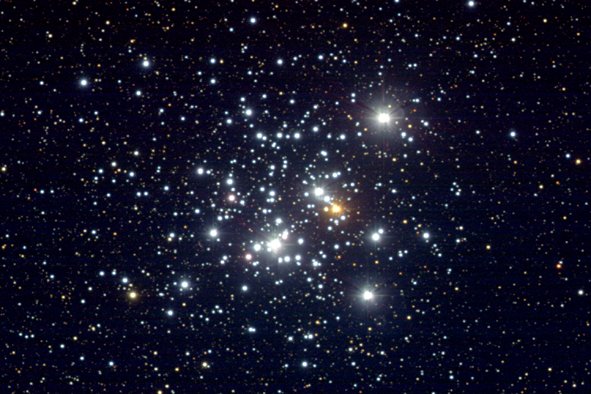
Image description: Nicknamed "The Jewel Box" for its stars' contrasting colors (blue, red, and yellow), this open cluster is located in the Southern Cross, 6,400 light-years away. Discovered by Nicolas-Louis de Lacaille in 1752, it hosts the red supergiant star κ Crucis, surrounded by hot blue stars. Its age is estimated at 14 million years. Image source: NASA/ESA/Hubble.
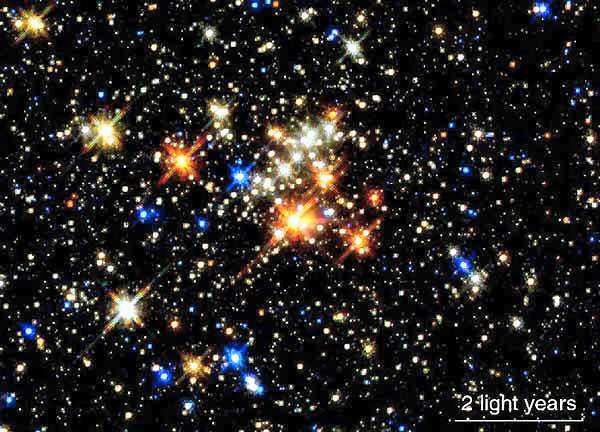
Image description: Close to the galactic center (26,000 light-years away), this massive cluster contains Wolf-Rayet stars and blue giants. Its name comes from five bright red stars visible in infrared. The region is rich in interstellar dust, obscuring some of its visible light. Image source: NASA/CXC.

Image description: A dense globular cluster in Scorpius, M80 contains hundreds of thousands of stars bound by gravity. In 1860, a nova was observed within it. Its apparent diameter is 10 arcminutes, but its actual size spans 95 light-years. Distance: 32,600 light-years. Image source: Hubble Heritage Team.

Image description: A young cluster (1-2 million years old) in Carina, hosting some of the Milky Way’s most massive stars, such as WR 20a (a binary system of 82 and 83 solar masses). Stellar winds sculpt complex gaseous structures, visible in X-rays. Image source: NASA/CXC.
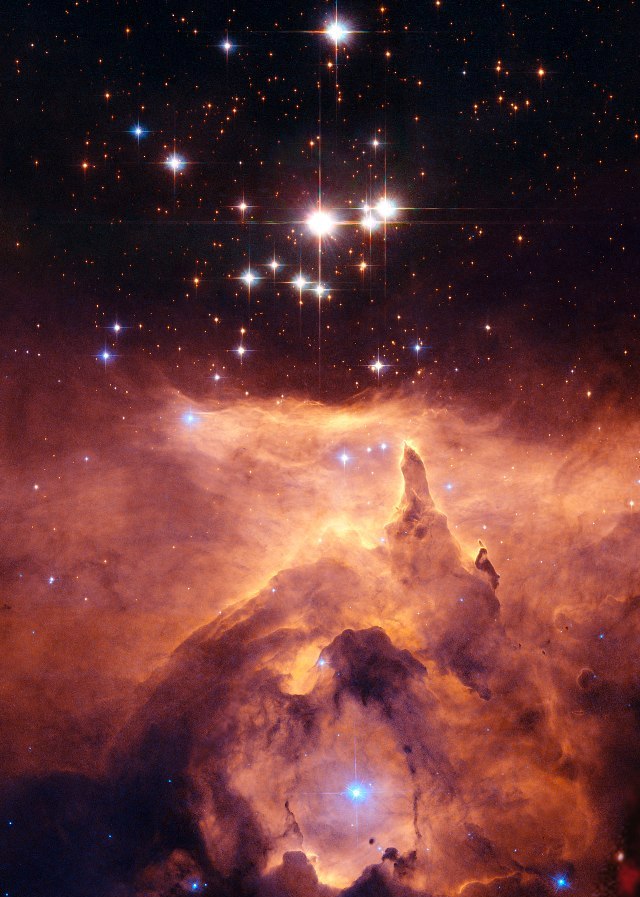
Image description: Within the NGC 6357 nebula, Pismis 24 hosts the star Pismis 24-1, initially estimated at 200-300 solar masses but later revealed as a multiple system. The cluster ionizes surrounding gas, creating dark pillars and plasma bubbles. Image source: ESO.
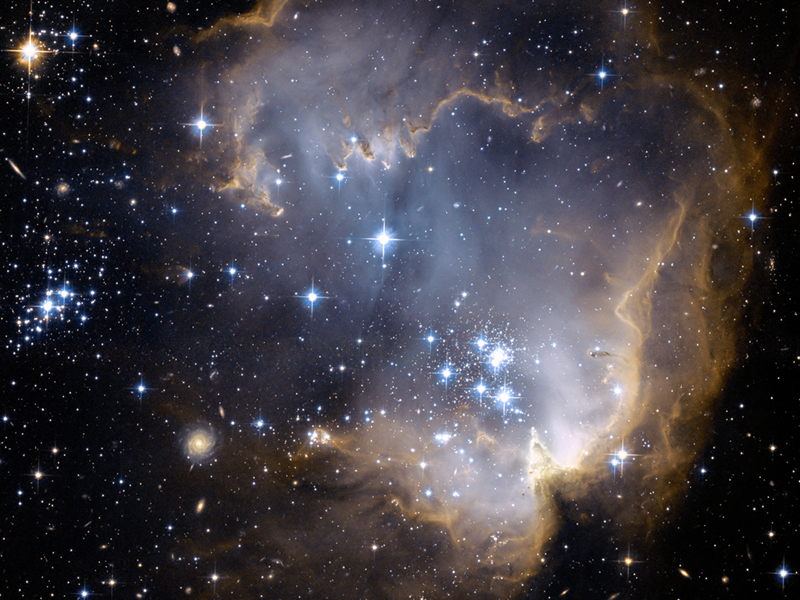
Image description: Located in the Small Magellanic Cloud, this young cluster (5 million years old) is surrounded by emission nebulae. Its massive stars carve a cavity in the ambient gas, revealing filamentary structures in false color (Hubble). Image source: NASA/ESA/Hubble.
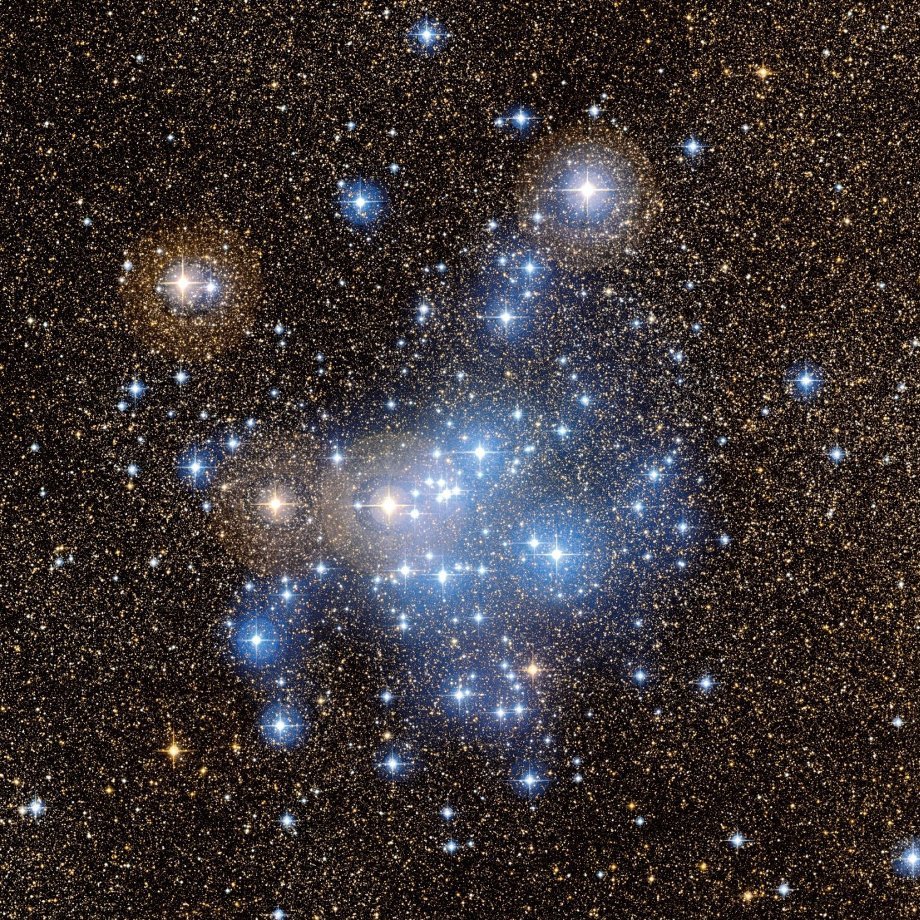
Image description: An open cluster in Sagittarius, 2,000 light-years away, containing the Cepheid variable star U Sagittarii. Its age is estimated at 90 million years, with about sixty confirmed stars. Image source: ESO.
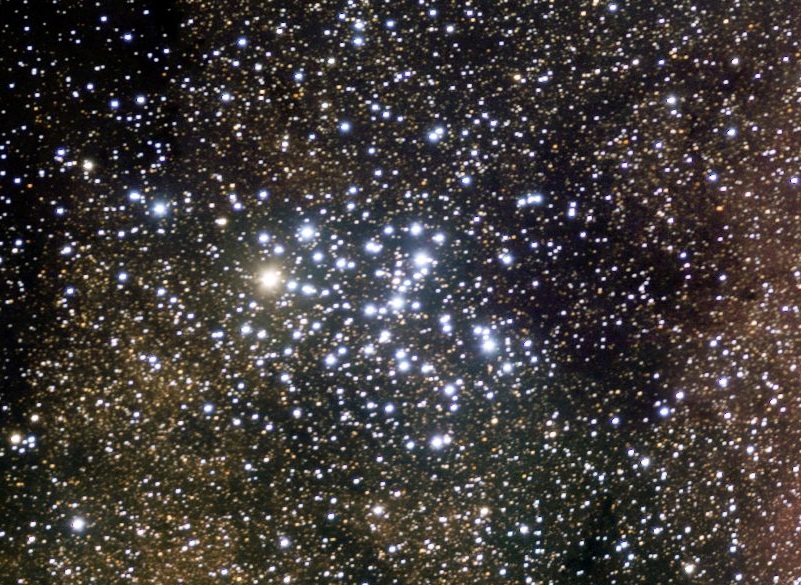
Image description: Named for its wing-like shape, M6 is an open cluster in Scorpius, 100 million years old. Its brightest star, BM Scorpii, is an orange giant. Distance: 1,600 light-years. Image source: ESO.
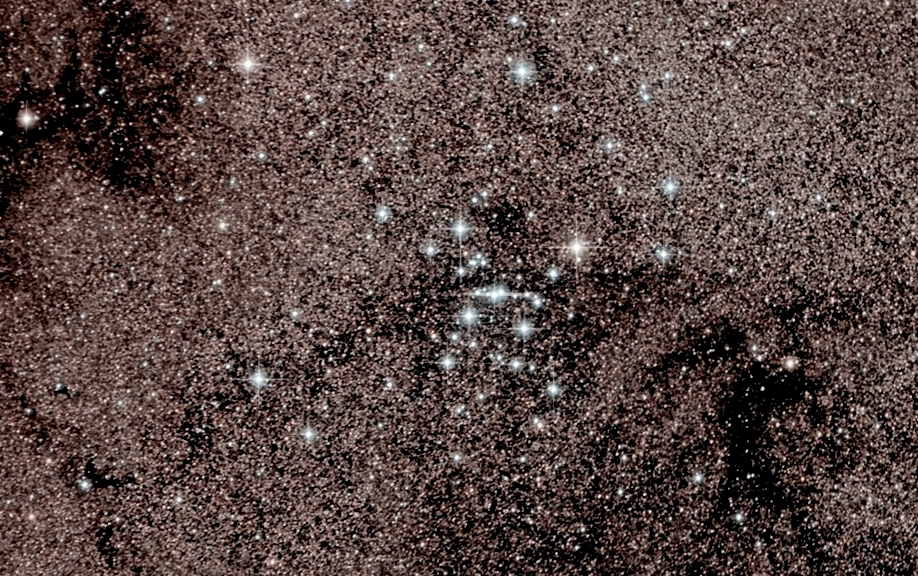
Image description: Known since antiquity, M7 is an open cluster of 80 stars in Scorpius, 980 light-years away. Its apparent diameter (1.3°) exceeds that of the Moon. Age: 200 million years. Image source: ESO.
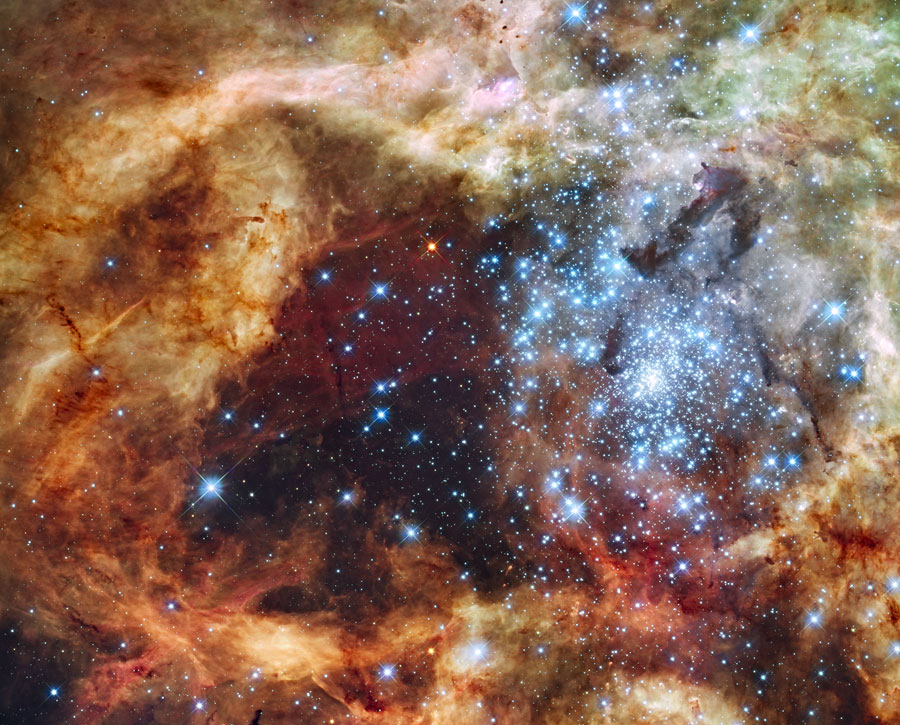
Image description: At the heart of 30 Doradus in the Large Magellanic Cloud, RMC 136 hosts R136a1, the most massive known star (250 solar masses). The cluster, 2 million years old, is a laboratory for studying extreme star formation. Image source: ESA/Hubble.
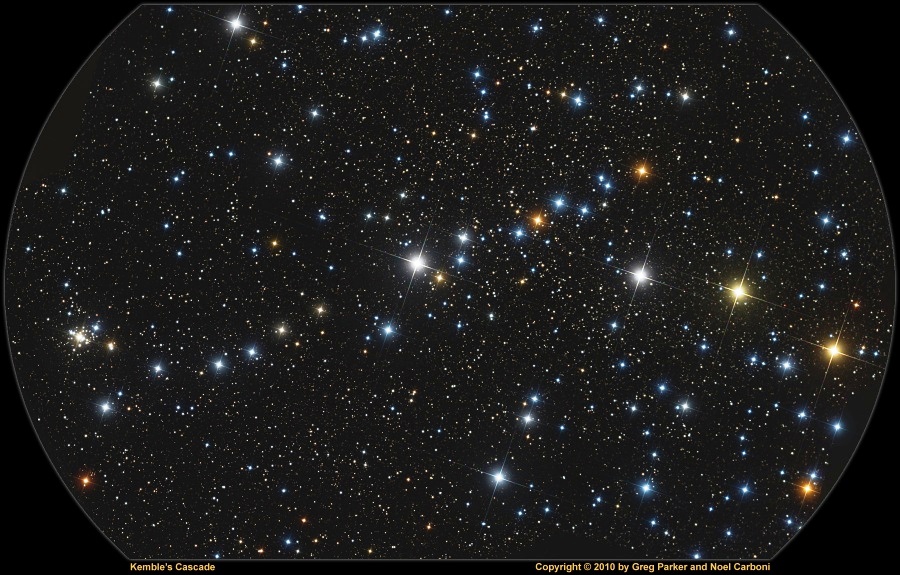
Image description: An asterism (not a true gravitationally bound cluster) in Camelopardalis, composed of about twenty stars aligned over 2.5°. Discovered by amateur astronomer Lucian Kemble, it points toward the open cluster NGC 1502. Image source: NASA APOD.
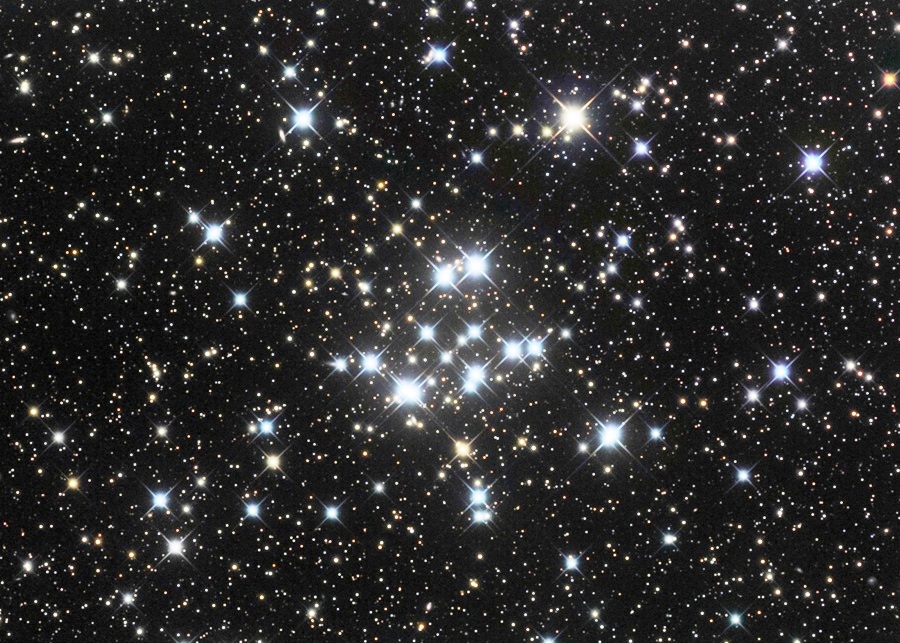
Image description: In Perseus, M34 is an open cluster of 100 stars, 200 million years old. Its distance (1,500 light-years) and magnitude (5.5) make it visible with binoculars. Image source: ESO.

Image description: A globular cluster in Delphinus, 50,000 light-years away. Loosely concentrated, it contains Population II stars (metal-poor). Diameter: 120 light-years. Image source: Hubble.
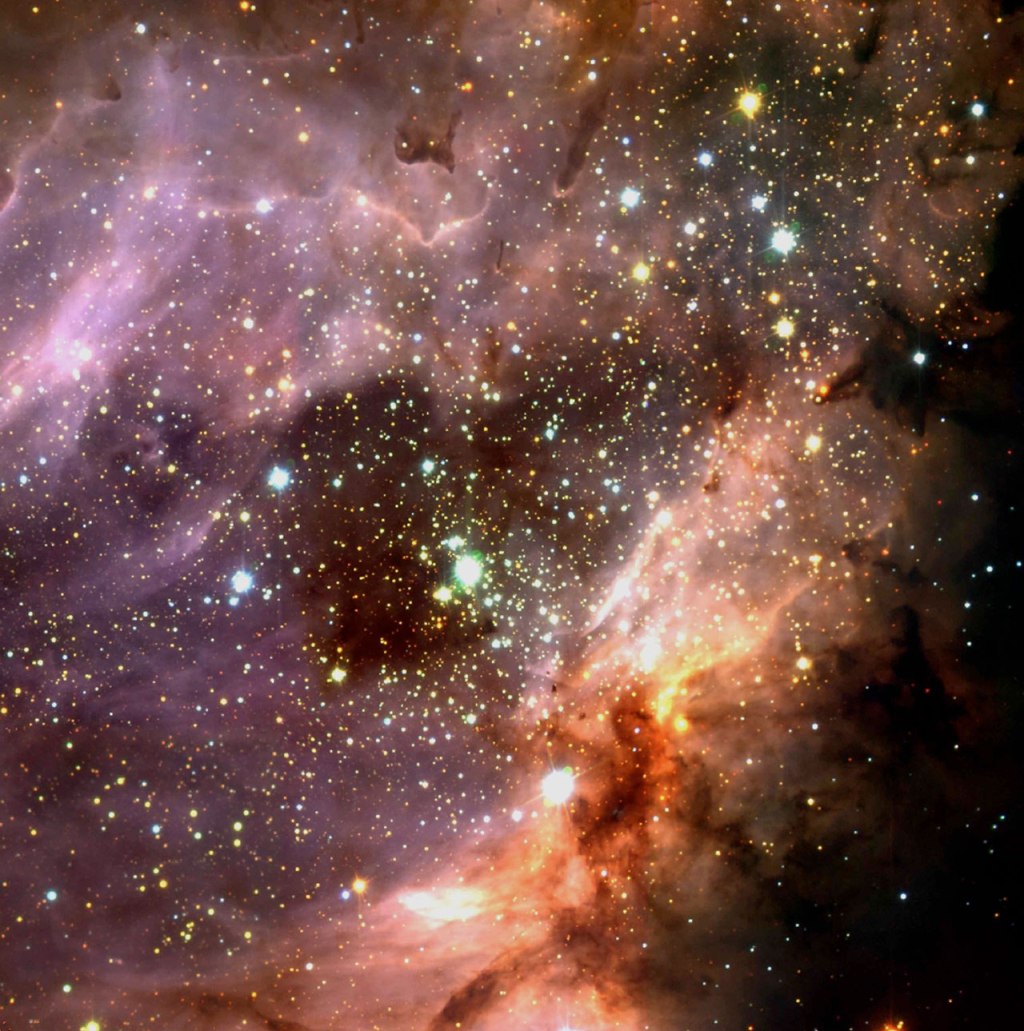
Image description: Though often associated with its nebula, M17 hosts an open cluster of 35 massive stars (O and B types) that ionize the surrounding gas. Distance: 5,500 light-years. Image source: ESO.
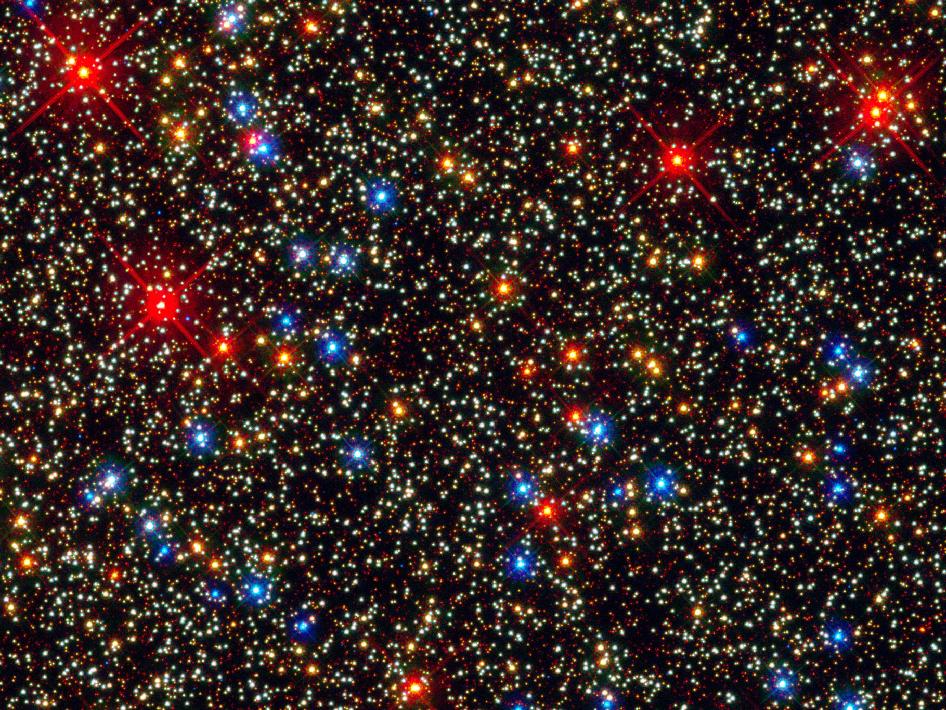
Image description: The largest globular cluster in the Milky Way (10 million stars), visible to the naked eye. Its dense core suggests a past as a dwarf galaxy absorbed by the Milky Way. Age: 12 billion years. Image source: NASA/ESA/Hubble.
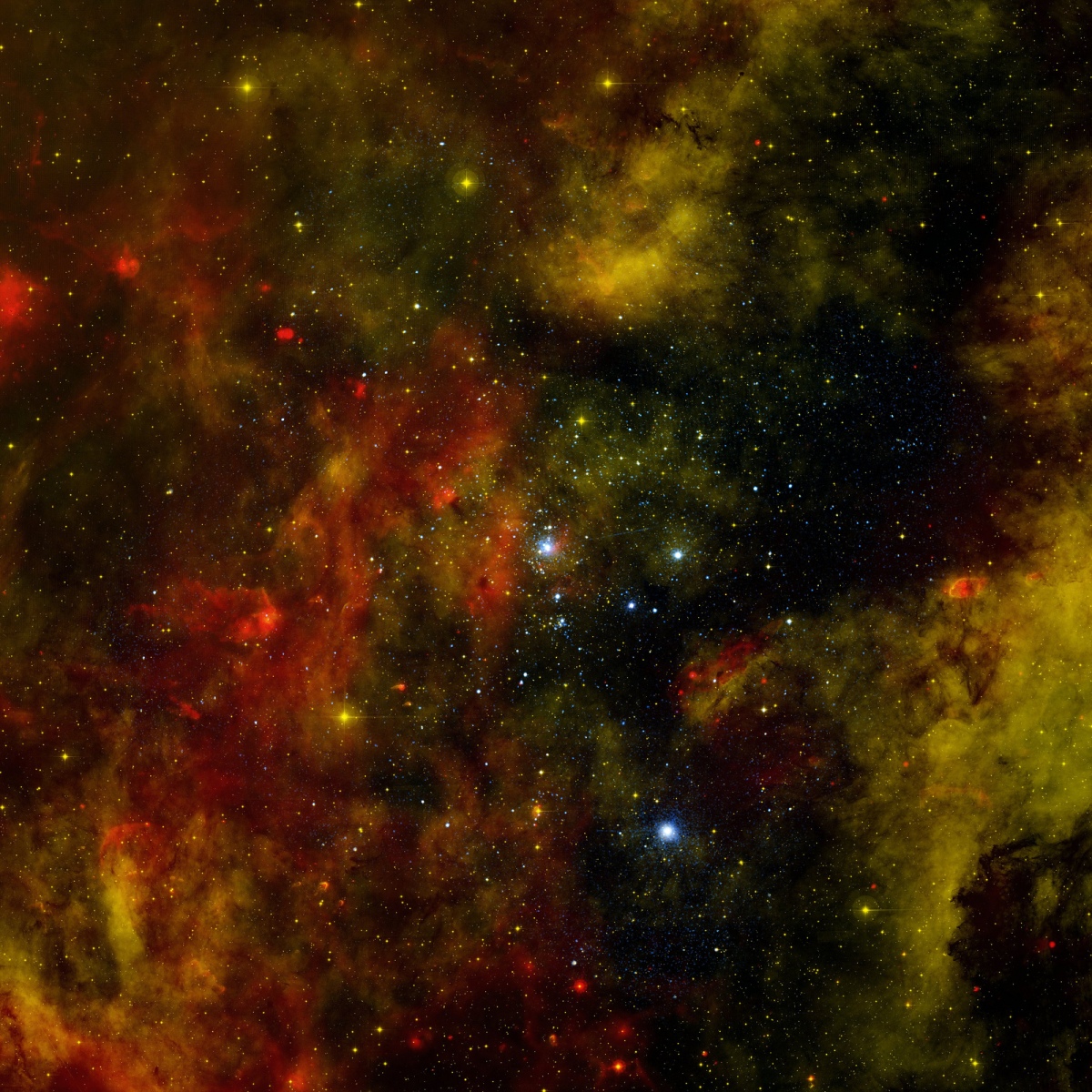
Image description: A massive stellar association in Cygnus, containing 65 O-type stars and thousands of young stars. Its distance (4,700 light-years) and obscuration make it a prime target for infrared study. Image source: NASA/CXC.

Image description: In Auriga, M38 (left) and M36 (right) are two open clusters located 4,200 and 4,100 light-years away, respectively. M38, cross-shaped, contains a yellow giant, while M36 is younger (25 million years) and more compact. Image source: NASA APOD.
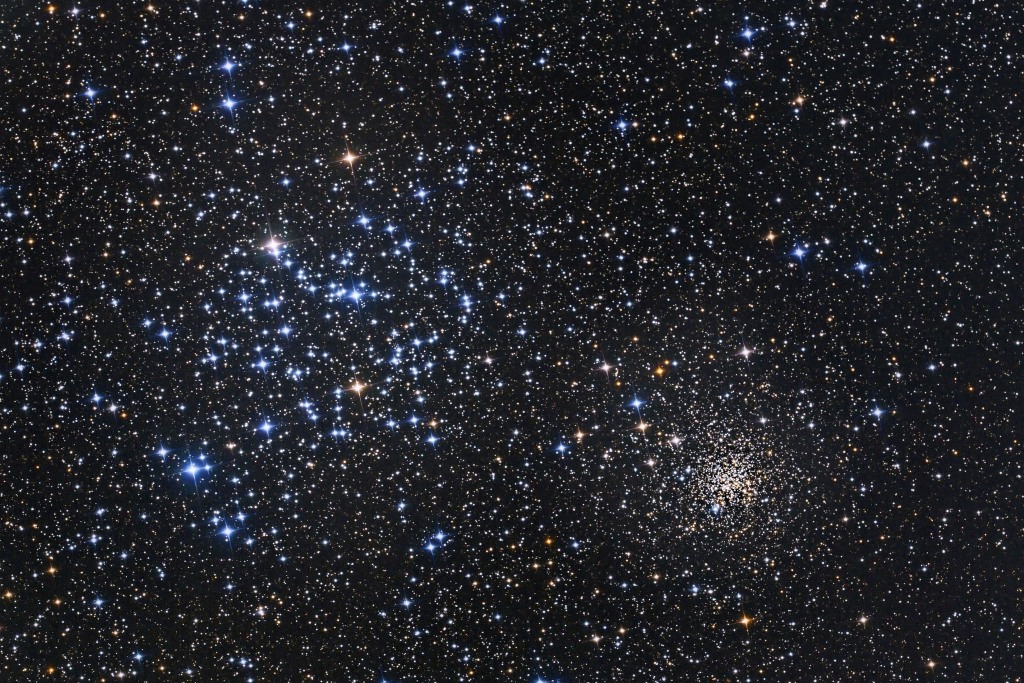
Image description: In Gemini, M35 is an open cluster of 2,500 stars, 150 million years old. Its apparent neighbor, NGC 2158, is an older and more distant cluster. Image source: ESO.
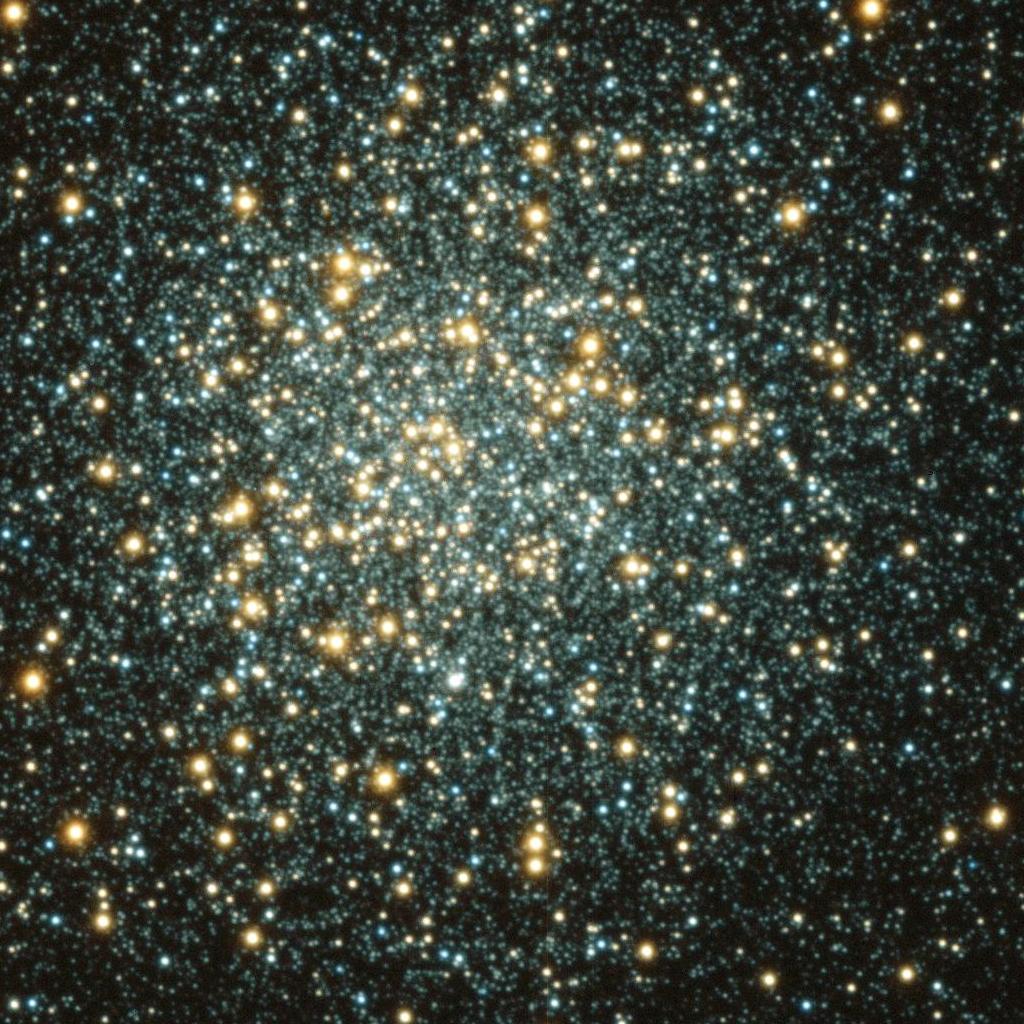
Image description: A globular cluster in Canes Venatici, containing 500,000 stars and 274 variable stars. Distance: 33,900 light-years. Age: 11.4 billion years. Image source: Hubble.
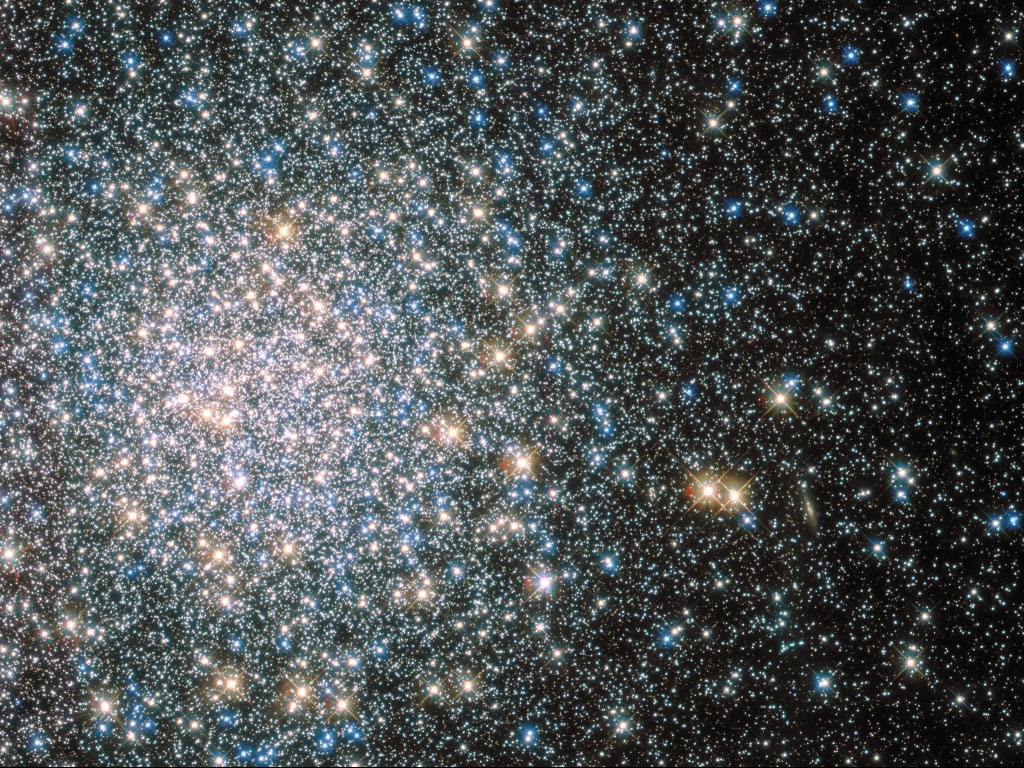
Image description: One of the oldest globular clusters (13 billion years), in Serpens. It hosts 105 variable stars and a very dense stellar population at its core. Image source: ESO.
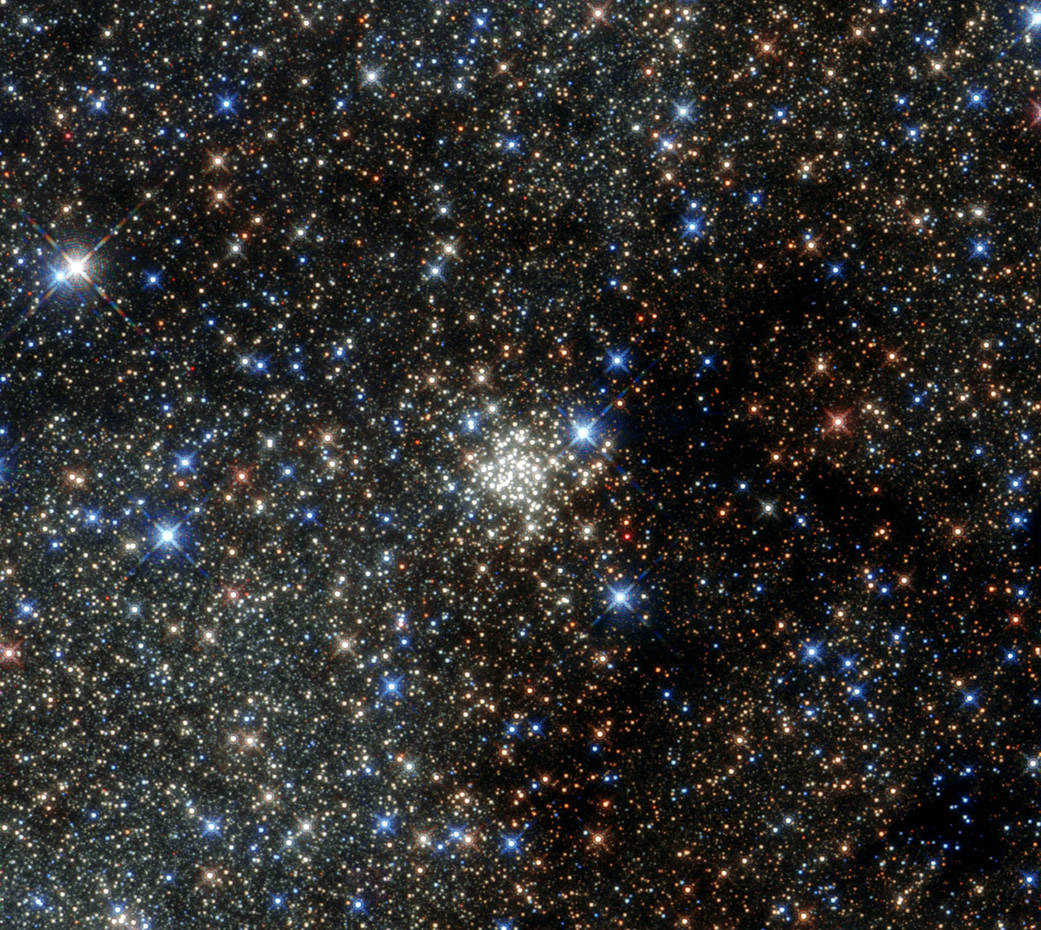
Image description: Close to the galactic center (25,000 light-years away), this young cluster (2-4 million years old) contains stars 100 times more massive than the Sun. Its extreme environment makes it a laboratory for studying star formation in dense regions. Image source: NASA/CXC.